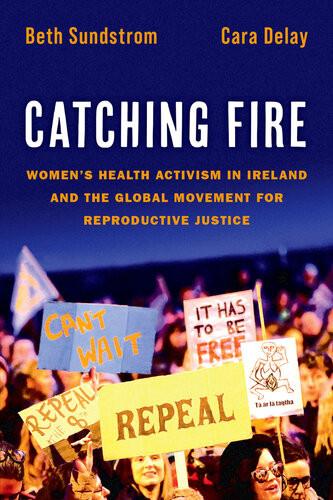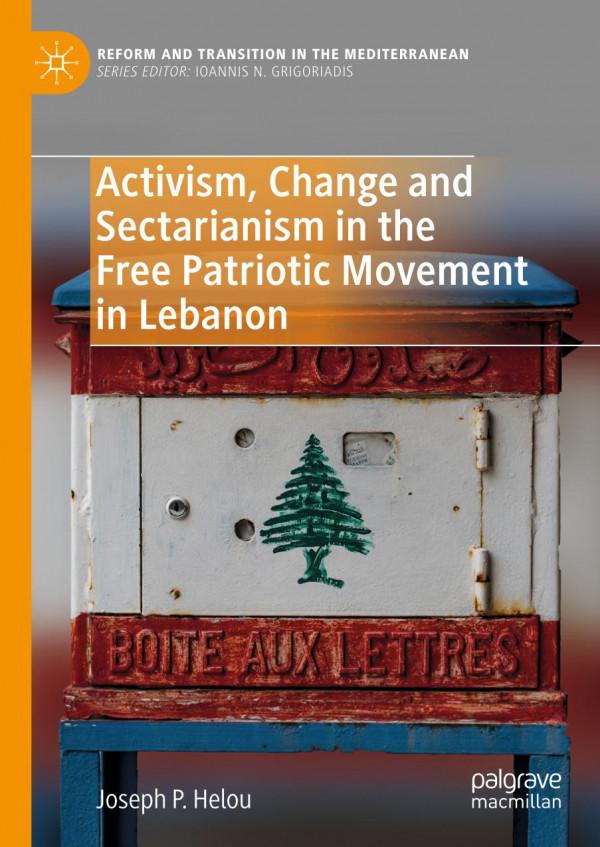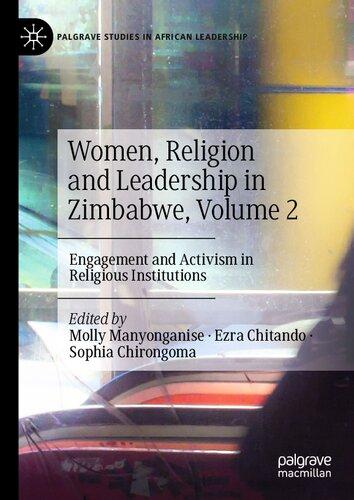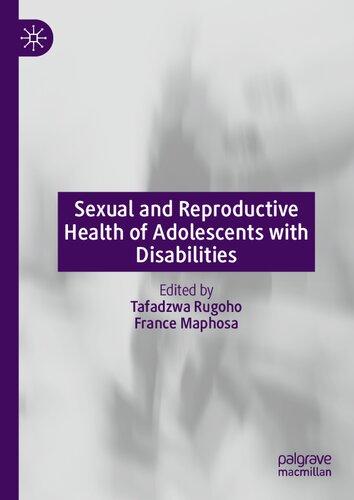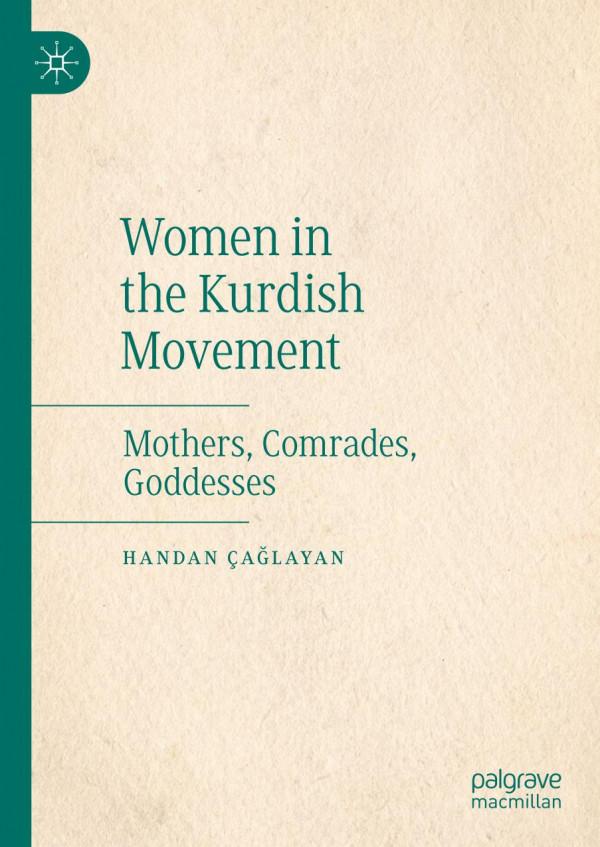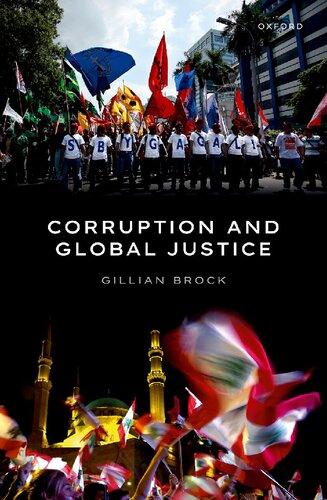ACKNOWLEDGMENTS
Writing this book has been a highlight of our careers and collaborations, and we are grateful to all who have supported us. We are particularly thankful for our Fulbright US Scholar Research Grant Awards in Ireland, which allowed us to complete research for this project, and for the communities we were fortunate to join at University College Dublin and University College Cork. We would also like to thank our colleagues at the College of Charleston. The School of Humanities and Social Sciences, the Departments of History and Communication, the Women’s and Gender Studies program, and especially, the Women’s Health Research Team (WHRT) have provided encouragement and assistance. Our work with faculty and students on the WHRT has inspired and energized us throughout this process. We are most appreciative of our collaborations with WHRT members, past and present, and particularly Ryan Murphy, Mackenzie Pelletier, Brooke Harris, Kaitlyn Victoria, Logan Elkins, Kate Davis, and Madeline Ashby, who helped us conduct research related to this manuscript.
We are indebted to our community of scholars, women’s health activists, and organizational partners in the United States and abroad, who make our research not only possible but also rewarding. We thank our colleagues at the Medical University of South Carolina, the University of South Carolina, Clemson University, Brown University, the Women’s Rights and Empowerment Network, the South Carolina Coalition for Healthy Families, Fact Forward, the South Carolina Cancer Alliance, the St. Jude Children’s Research Hospital HPV Cancer Prevention Program, Power to Decide, Free the Pill, and Ibis Reproductive Health, among others, for collaborating in our essential research on women’s health.
The editorial team at Oxford University Press has been a joy to work with. Sarah Humphreville has been supportive and enthusiastic at every step of this process. We also extend our gratitude to ÉireIreland/The Irish-American Cultural Institute and Emerald Publishing for permission to reprint portions of previously published articles.
We owe the success of our research to the activists and advocates who participated in our interviews. We are grateful for your generosity in sharing your time, experiences, and voices. Your stories and voices, which we hope we have done justice to here, are invaluable and need to be heard.
Our friends and families, especially Paris, Bryan, Millie, and Byrdie, have shown us such patience, encouragement, and generosity of spirit. Thank you for the time and space to write, and thank you for listening.
Introduction
In the aftermath of the successful 2018 vote to repeal Ireland’s divisive anti-abortion Eighth Amendment to the Constitution (1983)1 and pave the way for legal abortion, author Maeve Higgins captured the sentiments of the feminist activist community when she wrote in The New York Times, “There’s this feeling I get . . . in Ireland, particularly among women, and I wish you could feel it, too, because it’s extraordinary. It’s something like electricity but really a more ancient source of power, like fire, and the thing about fire, of course, is that it’s catching.”2 Higgins’s likening of women’s health activism to a natural source of power taps into traditions of feminine influence in Irish culture and also conjoins the past and present, nodding to the essential historical precedents of recent “electric” activism in Ireland. Her categorization of fire as a contagious force references the extraordinary potency and diffusion of women’s health activist movements in Ireland, which have indeed been “catching,” helping not only to overturn abortion restrictions but also to legalize same-sex marriage (2015); move toward womancentered healthcare, such as by reforming CervicalCheck and enacting the Coroners (Amendment) Act 2019 requiring an official investigation into all maternal deaths; and, currently, lead the call for further inquiries into the Magdalene laundries and Mother and Baby Homes.3
By shedding light on the essential work of activists, including ordinary people utilizing digital activism, and examining activist methods and messages, this book investigates how and why women’s health movements in Ireland “caught fire.” Over the past few decades, organizations and activists have mobilized to protest how Irish women have been harmed, and continue to be harmed, by a misogynistic healthcare system steeped in a damaging neoliberal,
postcolonial, and Catholic ethos.4 CatchingFire focuses on attempts by Irish healthcare reformers, organizations, social media contributors, and campaigners to address the wrongs of the past and improve Irish women’s5 access to essential healthcare services. Linking Irish developments to global movements, it also places recent activist campaigns in an essential, yet often overlooked, historical context. Irish activists and advocates employed a strategy of truth-telling, making women’s narratives and embodied experiences the central focus of their movements, and engaged with a variety of media outlets to spread their message and enact change. In particular, activists utilized technology to their benefit, contributing to the growing field of feminist digital activism. Moreover, their approach of empowering ordinary women to tell their own stories through ethical communication has resulted in widespread compassion and solidarity. This strategy, we argue, has personalized reproductive justice and established the Republic of Ireland as a model for future global activist movements. In fact, the successful example of In Her Shoes, a 2018 campaign on Twitter and Facebook that helped convince Irish voters to overturn restrictive abortion legislation, has been mimicked in places like Gibraltar, where activists also have sought to reform restrictive abortion laws.6
APPROACHES AND METHODS
In their essential essay exploring the possibilities of transitional justice in Ireland, Katherine O’Donnell, Maeve O’Rourke, and James M. Smith ask, “What is it that Ireland still needs to learn about its treatment of women, children, and others marginalized by poverty, sexism, racism, ageism, and ableism both in the past and in the present?”7 As we argue in this book, how and why women’s bodies and reproductive experiences were at the heart of this oppressive “treatment” of women and children remains understudied. A plethora of important recent research has shed light on the institutions that comprised what James Smith calls Ireland’s
“architecture of containment” and Caelinn Hogan refers to as “the shame-industrial complex.”8 Still, most works continue to explore the legal, political, and religious contexts of these institutions; what happened to the infants and children who entered or were born in institutions; the circumstances that led to women’s incarceration in Magdalene laundries and Mother and Baby Homes; or who was/is “responsible” for these institutions and the harm they created.
While these are all essential areas of study, the real-world embodied experiences of women and all people who can become pregnant both inside and outside of these institutions have been largely left behind. And scholars’ focus on institutions, while welcome and important, has sometimes obscured how Irish women were metaphorically incarcerated in other spaces of Irish society, including homes, hospitals, and healthcare providers’ offices. In this book, while we reference women’s health within the institutions that comprised the “shame-industrial complex,” we also broaden the conversation to underscore the importance of misogyny in women’s health. We analyze a series of representative examples and case studies that demonstrate most clearly the work of activists: the cervical cancer prevention crisis, contraception, abortion, pregnancy, childbirth, forced hysterectomies, and symphysiotomy. We build on the work of Claire Bracken and Cara Delay, who argue that “the island’s history of institutionalization in Magdalen laundries, asylums, and Mother and Baby Homes should also be read alongside the realities of inadequate healthcare for women and their oppressions by and through the medical establishment.”9 This is a significant issue when studying a country that placed multiple meanings, and enacted violence, on women’s real-world bodies. As Clara Fischer writes, “the moral purity at stake in the project of Irish identity formation was essentially a sexual purity enacted and problematized through women’s bodies.”10 It is to women’s embodied realities and healthcare experiences, then, that we must turn our attention.
Recently, Irish Studies scholars and activists working on the Magdalene laundries and Mother and Baby Homes have pointed out the need to feature the voices and narratives of survivors and,
where possible, victims—those “who have been too frequently ignored.”11 “In Irish efforts to address historical abuse across a range of contexts,” writes James Gallen, “power remains out of the hands of victim-survivors and of those traditionally marginalized in society.”12 In this book, we attempt to feature the voices of those affected by healthcare harms; the activists and activist organizations whose work has been, and is still, essential to changing the culture of women’s healthcare in Ireland; and the ordinary Irish people who became changemakers through digital activism.
We have also responded to the call by scholars that research on digital feminist activism should address intersectionality in order to understand social movements.13 Through the lens of digital intersectional communication theory, we examine the ways that social media advocacy and intersectionality impact truth-telling in women’s health activism.14 We adopt an intersectional framework and analysis, recognizing the extent to which scholarship on reproduction and healthcare in Ireland has been limited by a focus on white, middle-class, cis-gendered, and straight individuals. Such an approach does not illuminate real-world experiences or realities in Ireland today. In 2019, for example, migrant and ethnic minority women comprised 40% of maternal deaths in Ireland.15 An activist we interviewed problematized the reality that some parts of the 2018 movement to repeal anti-abortion statutes were “overwhelmingly white,” pointing out that migrant and disabled women, along with those living in Direct Provision, “where you know parents can’t make the most basic decision about how to parent their children, and you know, kind of living in this isolation and degradation being institutionalized,” are particularly burdened under the existing system. Another activist wrote of the Repeal movement, “For the most part, we didn’t hear from the messier edges of the campaign, from the places where multiple oppressions occur to squeeze people of their rights. There was no place in this exceptionally respectable campaign for the sex worker, the woman with a psychosocial disability, women of colour, migrant women,
Traveller women, trans men. They were sacrificed for the greater good.”16
Since Repeal, the healthcare realities of marginalized groups have further come to light, especially as the system of Direct Provision, which houses asylum-seekers, has been criticized and rethought. Katie Mishler categorizes Direct Provision as an heir, or even a continuance, of the “shame-industrial complex.” “Migrants and women of color in the asylum system,” she writes, “continue to be subjected to the same biopolitical control as so-called ‘fallen women’ in the last century.”17 Similarly, the work of the advocacy group Migrants and Ethnic-minorities for Reproductive Justice (MERJ) has underscored how the Irish state persists in subjugating migrants and people of color. MERJ was born in 2017 in order “to create a platform for the often hidden faces and voices of migrants and ethnic minorities in Ireland that were all but missing from Irish feminism.”18 Furthermore, as Fiona de Londras and others have pointed out, the post-Repeal Health (Regulation of Termination of Pregnancy) Act (2018) harms transgender and nonbinary people who may need abortion “as a result of the government’s refusal to add ‘pregnant person’ to the statutory descriptor of those accessing care under the law.”19
Also essential to an intersectional framework is a recognition and exploration of the ways in which women’s healthcare activism has long built from, and intertwined with, other forms of activism. Bridget Keown writes, for example, “The theoretical foundations that gave rise to the gay-rights movement and subsequent marriage referendum of 2015 are the same that led to the movement to repeal the Eighth . . . Both focused on the harm—physical, emotional, spiritual, and psychological—done by prevalent heteronormative notions of identity, citizenship, autonomy, and health.”20 Steph Hanlon, activist in Carlow, Ireland, explains that abortion-rights activist organizations did not, and do not, focus solely on abortion: “We were long-time activists who campaigned during the water charges movement, the marriage referendum, are now active in Extinction Rebellion . . . we originated in 2017 due to the
struggle for abortion; however, during that time we’ve lobbied for other issues i.e., housing, childcare, trans rights, etc.”21
To best explore the complexities of health discrimination and activism in Ireland, CatchingFire offers a mixed-methods approach. It features archival research, document analysis, interviews with activists, and participant observation. Participant observation included more than twenty hours of informal meetings with experts and activists in Ireland. Qualitative observations involved openended discussions and activities documented in unstructured field notes.22 The document analysis portion of the study included an examination of published documentation and archival records, as well as traditional and social media. Archival research was conducted at the National Archives, Dublin; the National Library, Dublin; the An Bord Altranais (Nursing and Midwifery Board) Archive, Dublin; and the Boole Library, University College, Cork. Archival materials include documents from the Irish women’s movement spanning the 1970s to the 1990s, the records of An Bord Altranais, and government documents such as directives and surveys from the Health Department. In examining these archival sources, we recognize their limitations as documents created primarily by white, cis-gendered individuals representing the viewpoints of organizations or the government. In the Irish archives, this shortcoming is particularly evident. We therefore draw here on recent scholarship that has created an imperative for doing more than simply reading so-called “traditional” documents “against the grain.”23 We attempt to focus on not only whose stories the archives tell but also “how stories are told” and what stories are often left out.24
To access some of the historical actors whom traditional archives overlook, we also examined published sources, including feminist journals, newsletters, newspapers, government reports, and autobiographies/memoirs. We collected publicly accessible documents (websites, press releases, reports, tweets, Facebook posts, YouTube videos, etc.) from twenty women’s organizations. Finally, we searched for news and key figures on Twitter and Facebook to provide additional evidence. Therefore, this research
highlights both traditional and social media, which have been essential to women’s health activism. Materializing from a history of silence and stigma, women’s voices have been amplified by technology and social media. Activists and advocacy organizations have been instrumental in raising awareness of, and support for, monumental social and cultural change, including through digital story-telling and multimedia projects, such as the documentary Picking up the Threads by filmmaker Anne-Marie Greene and the short film Silent Killer: A Timeline of the DEATH of Savita Halappanavar by Laura Fitzpatrick. In recent years, visual digital culture and art has emerged as “a key site through which to track and consider forms of activist story-telling beyond the narrative threads of the written word.”25
Interviews were conducted with health activists in Ireland in 2018 and 2019. Purposive sampling was used to recruit interview participants based on predetermined criteria. In addition, we asked participants to refer other activists, offering a “snowball” sampling approach to maximize requisite variety. Interviews were robust in both length and depth, lasting over an hour at in-person locations convenient for participants or via Skype. Interviews were digitally recorded and transcribed verbatim. All data were combined into the evidentiary database. Some of the activists we interviewed shared concerns about being identified and requested anonymity. In order to fully respect these wishes and maintain consistency, we will quote all participants in our research without identifying them by name. The reproductive justice framework and a constant comparative method provided a rigorous, inductive approach to data analysis to identify patterns and themes across the data.
Throughout, we employed feminist research methods, which are committed to intersectional analyses that acknowledge participant and researcher standpoints.26 Feminist inquiry explores the lived experiences of women as creators of knowledge and makes the impact of gender visible where it was hidden.27 The overall aim of feminist research is to support social justice and redress inequities that impact the lives of women and other oppressed groups.28 This
book builds on Donna Haraway’s call to disrupt the nature/culture duality to move beyond essentialism in order to understand how technology may be used to support women.29 Following feminist science studies, our analysis demonstrates social construction of knowledge and explores technoscience outside of hegemonic process to reimagine gender, sex, and nature.30 In a global context, we addressed power and intersections of difference by engaging in dialogue with multiple forms of difference.31 We employed feminist interviewing to value the voices and lived experiences of women in Ireland. As a result, feminist interviewing methods address the power imbalance in the researcher-researched relationship by focusing on relationships.32 As women’s health activists ourselves, we validated relationships with our participants through selfdisclosure, “woman-to-woman” talk, and reciprocated nurturing, promoting true dialogue by empowering participants to serve as coresearchers rather than subjects of our research.33
GLOBAL RIGHTS AND REPRODUCTIVE JUSTICE
The conceptual framework of Catching Fire is reproductive justice. Reproductive justice is itself grounded in a global human rights context. In 1994, the International Conference on Population and Development (ICPD) declared that women’s rights are human rights —and that these rights depend on each person’s ability to determine if, when, and how to have children.34 Furthermore, the conference established that women’s health is inextricably intertwined with women’s empowerment and gender equality more broadly. Around the same time, a group of American Black women met in Chicago to create the reproductive justice movement, which centers the needs of women of color and other marginalized people who had been largely overlooked by traditional women’s rights movements in the twentieth century.35 SisterSong, the largest national multiethnic reproductive justice collective in the United States, defines reproductive justice as “the human right to maintain personal bodily
autonomy, have children, not have children, and parent the children we have in safe and sustainable communities.”36
Reproductive justice is based on human rights and requires bodily autonomy for all people. Reproductive justice goes further, arguing that individual human rights are indelibly linked to larger social, historical, cultural, and structural issues that must not be ignored. Reproductive health includes fertility management, childbirth, and parenting, which are fundamental human rights.37 As a result, reproductive justice advocates for a social safety net provided by the government to ensure access to the basic necessities parents need to raise their children in a safe and healthy environment. Kimala Price writes that reproductive health and rights are connected to other social justice issues, including education, economic justice, poverty, housing, immigration policy, environmental justice, drug policies, prisoners’ rights, and violence.38 Violence includes institutional and state-sponsored violence that impacts women’s reproductive health, such as policies that reflect neoliberalism, colonialism, white supremacy, criminalization, and capitalism. A reproductive justice approach aims to understand and dismantle the systems of social inequality that shape, oppress, and restrict reproductive rights and health access.
Both a human rights framework and reproductive justice are essential to understanding the Irish context. Since at least the 1990s, health activist organizations and individuals have consistently challenged national laws and policies by holding the state accountable to global human rights policies. As a member state of the European Convention on Human Rights, for example, Ireland has agreed to protect its citizens’ “right to life.” Health activists have argued that this applies to Ireland in the case of maternal healthcare, which, as scholar and activist Jo Murphy-Lawless’s work has elucidated, has consistently fallen short in protecting and preserving maternal lives.39 Tanya Saroj Bakhru argues that in response to crises such as the 2012 death of Savita Halappanavar, the Irish Family Planning Association (IFPA) “responded with a call to action based on human rights discourse,” underscoring “the
discrepancies in Irish law, service provision and international human rights covenants to which Ireland was a signatory.”40 By referencing a human rights framework, Irish activists have provided a clear legal rationale for their proposed reforms and also, significantly, have linked Ireland with global and transnational movements to guarantee the rights of individuals. Murphy-Lawless, however, points to the need for a more comprehensive reproductive justice analysis: “There is an acute need to analyze the resulting structural inequalities that the neoliberal state has both fostered and denied in order to see more clearly the myriad ways in which they impact women’s lives.”41
In Ireland and beyond, activists and organizations addressing women’s health have sought to combine a human rights perspective with a more encompassing reproductive justice framework. Several interviewees we spoke to articulated the need for Irish health activists to privilege reproductive justice. One talked about a “kind of totality about how we understand reproductive injustice and maternal death and maternal morbidity and access to contraception and home use of the abortion pill, and you know I thought all of this was part of this same story.” According to another activist, “I also think the perception of motherhood, there’s a whole debate that’s going to have to happen around fertility and infertility and working mothers, women who don’t have children and work, there’s a lot of issues there that we haven’t seen in Irish society, that we could see come out in the debate.”
Although Ireland appears to be a more homogeneous society than the United States and thus may not obviously lend itself to an analysis of the intersections of race, gender, and class that reproductive justice demands, recent examples involving the Traveller community, migrants, and people of color in Ireland point to its changing demographics and the resulting need for a more nuanced investigation. In addition to the 2012 Savita Halapannavar case, when Indian-born Halapannavar died after being refused a therapeutic abortion in a Galway hospital, the 2010 examples of pregnant Nigerian migrant Bimbo Onanuga, who died at Dublin’s Maternity Hospital, as well as “Applicant C,” a Lithuanian migrant
who sought an abortion in Ireland, testify to the unique challenges faced by migrant women in Ireland.42 Furthermore, examinations of how Ireland’s historical “others,” including not only religious minorities or historical migrant groups (e.g., post-WWII Hungarians) but also the Traveller community, its indigenous ethnic minority group, have demonstrated that the supposed historical homogeneity of Irish society is more construction than reality.43 Investigations of Traveller women’s reproductive experiences in particular have exposed a system that marks these women as different and “pathological.”44 The reproductive justice movement’s emphasis on the intersections of gender, class, and race/ethnicity therefore is directly relevant to the Irish case.
Furthermore, in the Irish context, reproductive justice also offers a conceptual lens to understand the island’s unique colonial and postcolonial past and present. Clara Fischer has written about “the stubborn persistence of the denial of reproductive rights to women in Ireland over the decades by arguing that deep-seated, affective attachments formed part of processes of postcolonial nation-building that relied on shame and the construction of the Irish nation as a particular, gendered place.”45 Ireland’s women were long subjugated under the British colonial system and were defined after Irish independence as bearers of the new postcolonial nation. As a result, their bodies were contained and controlled in variety of contexts, including through the religiously informed and medicalized reproductive healthcare system. As is common in colonial and postcolonial contexts, traditional women’s health practitioners in Ireland, known as handywomen, were targeted as dirty and “uncivilized” by colonial authorities. After independence, male religious, political, and medical leaders sought to continue the imperial “civilizing mission” and thus demonstrate that the new Ireland was worthy of self-rule.46 A new focus on combating infant mortality and ensuring that Irish women acted as good mothers resulted in government-sponsored maternity and child welfare schemes that served almost 60,000 Irish women by the mid1930s.47 Concomitantly, professionally trained nurses and physicians
became the designated experts on women’s reproductive health, and throughout the next few decades, a modern biomedical paradigm overtook women’s healthcare.48
Here, again, the Irish context was unique in the influence that the Catholic Church held over physicians.49 In the late 1960s, Irish women composed letters to journalist Monica McEnroy of the magazine Women’sWayabout the obstacles they faced in regulating their fertility. One woman directly pointed out the links between the Irish medical profession and the Catholic Church, writing:
I am thirty-eight. I have five lovely children. The eldest is eight and I have just lost another baby before its time. I have high blood pressure for the past two years. I asked my doctor could I not try the Pill as I want to try and look after the children. The worry of another miscarriage is always hanging over me, but he told me I would have to wait until they got word from Rome.50
Ireland’s history of colonial domination requires a more in-depth analysis of ethnicity, religion, and otherness as they were, and are, mapped on women’s reproductive bodies. Reproductive justice also applies to the Irish case when we consider that throughout much of the twentieth century, while married women were urged and coerced into having children, others—notably unmarried women who were incarcerated in Mother and Baby Homes and other punitive institutions—were denied “the right to havechildren.”51
TRUTH-TELLING
Irish Studies scholars in recent years have explored the concept of transitional justice as a means of working through the harms of the country’s violent institutional past. Although most commonly used in societies emerging from war or conflict, transitional justice has been applied more widely as a way to process and account for numerous historical harms and traumas, including, for example, in relation to Canada’s troubling history of Indian Residential Schools.52 In Ireland, transitional justice is being discussed as a potential approach in dealing with the history of the Mother and Baby Homes and
Magdalene laundries.53 While there is also a case to be made for categorizing hospitals as institutions that may fall under the purview of transitional justice, we find one particular element of the concept most useful in the Irish case: truth-telling. An activist we interviewed stated:
I think truth-telling is an important aspect of reproductive justice because in international human rights law, one of the key human rights guarantee is nonrepetition, and I don’t think you can guarantee nonrepetition if you don’t know what you did. If you don’t investigate the patterns of abuse that we were complicit in the past you can’t guarantee something similar won’t happen in the future.
In 2007, the United Nations described a “right to truth” for individuals, societies, and nations. Over the last half century, truthtelling in the form of truth and reconciliation commissions has been recognized as a central feature of postwar transition to enact justice and reparation.54 Beyond the context of war and conflict, truthtelling offers a mechanism to document and condemn violations of human rights, which may or may not include judicial action.55 According to Hala Bassel, truth-telling among the victims of enforced sterilizations in Peru served as a nonviolent method of historical justice that protected victims’ right to the truth as a form of resistance and created the possibility of reparation.56 Margaret Urban Walker argues that truth-telling by victims of injustice is a kind of reparation itself, though it is unlikely to be sufficient reparation.57
Although many scholars advocate for truth-telling as a form of healing for victims, Karen Brounéus argues that women who had participated in reconciliation tribunals in Rwanda experienced traumatization, ill health, isolation, and insecurity.58 Similarly, James Gallen problematizes transitional justice as potentially patriarchal, writing, “Further criticism has suggested that transitional-justice practice retains a significantly genderblind approach, with the result that women are typically disadvantaged and deprioritized in the
provision of testimony, accountability, prosecution strategies, and access to effective remedies and redress.”59
Truth-telling requires an analysis of gendered contexts; therefore, truth-telling and reproductive justice go hand-in-hand. In most cases, truth-telling in response to violations of human rights is initiated by the state. However, Alison Crosby and M. Brinton Lykes investigated truth-telling introduced by civil society, which emphasized accountability by listening to women’s voices, avoiding reifying or essentializing women’s experiences, and affirming local women’s meaning making.60 It is this approach, which mirrors a reproductive justice framework, that can make truth-telling transformative. According to Gilmore, social media has democratized truth-telling, allowing new, credible speakers to emerge as power shifts.61 There is a robust literature examining feminist digital activism related to intimate partner violence and rape culture.62 One analysis of truth-telling in the #MeToo movement revealed “there was so much pain, carried over a lifetime, exacerbated by silencing, that poured into the public square.”
Although not without its limits and problems, social media offers a platform to co-create health and illness narratives and share everyday lived experiences.63 Kaitlynn Mendes, Jessica Ringrose, and Jessalynn Keller highlight the challenges and potential of digital feminist activism:
While being vehicles for incivility, misogyny, and abuse, digital platforms such as blogs, Twitter, and Tumblr simultaneously offer women a platform where they can communicate, form communities of support, engage in consciousness-raising, organize direct action, disrupt the male gaze, and collectively call out and challenge injustice and misogyny through discursive, cultural, and political activism.64
Online narratives enable individuals to see themselves in the stories of others, creating emotional and intellectual engagement.65 In Ireland, social media has also provided an anonymous, decentralized platform, which created new opportunities for marginalized groups, such as Traveller, refugee, and asylum-seeking women, who may not
have always been welcomed by mainstream movements, to engage in truth-telling.66 As a result, truth-telling is particularly relevant to an analysis of reproductive justice and women’s health in Ireland.
CatchingFire begins with an analysis in chapter 1 of the cervical cancer prevention scandals of the early 2000s. In 2015, Ireland saw a misinformation campaign about the human papillomavirus (HPV) vaccine that led to a sharp decline in Irish vaccination levels; just three years later, Ireland’s CervicalCheck screening program came under scrutiny once it was revealed that it gave hundreds of women incorrect negative screening results, leading to several preventable deaths from cancer. However, women and public health advocates publicized and problematized these scandals, forcing a government response and demonstrating the power of truth-telling and ethical communication. They exposed systemic and endemic problems involved in women’s healthcare in Ireland, including overinflating the authority of male doctors and the medical establishment’s history of ignoring women’s experiences and voices.
Chapter 2 moves to an analysis of contraception, arguing that access to birth control is one of the most essential issues facing people in Ireland today. Following the lead of activists and social media contributors, this chapter places contraception in conversation with other healthcare issues, notably abortion. It explores how and why those who have advocated for abortion rights in recent years also have prioritized access to contraception by adopting a reproductive justice framework. By dispelling harmful myths, confronting contraceptive ignorance and opposition, and sharing everyday embodied realities, activists and advocates ultimately helped convince the government to budget for free contraception, which was implemented in January 2023 for women and people with a uterus aged 17 to 26.
The analysis of abortion in chapter 3 highlights the importance of the Repeal campaign, which in 2018 helped lead to a successful vote overturing the anti-abortion Eighth Amendment to the Irish Constitution. In late 2018, the Health (Regulation of Pregnancy) Act legalized abortion up to twelve weeks in a pregnancy. The chapter
analyzes both the methods and content of the Repeal movement, demonstrating its global meanings and links as well as how and why it resonated with so many Irish people. It also interrogates the efficacy of social media activism, asking what voices such campaigns featured—and what voices they sometimes obscured. Moving beyond legality to engage with reproductive justice, chapter 3 also underscores the importance of abortion access, which has remained limited since the 2018 Act and especially during the COVID-19 pandemic.
Chapter 4 turns to an examination of pregnancy, deconstructing issues of identity and power by explicating how medicalization has impacted the embodied experience of pregnancy in Ireland. Through a study of the National Maternity Strategy and current maternity practices, this chapter explores how calls for woman-centered care intersect with practices of midwifery and the biomedical obstetric paradigm. An analysis of the InOur Shoes—COVIDPregnancy social media campaign, which shared anonymous narratives from women impacted by COVID-19 restrictions in Ireland, highlights the current context of debates on pregnancy rights and activism. The COVID-19 pandemic magnified existing health systems issues and disrupted access to maternal health services, revealing how medicalization of women’s bodies and the institutionalization of maternity services continue to regulate women’s reproductive lives and result in systematic repression during labor and childbirth. Uncovering gender inequity in government policies during a time of crisis reveals the need for systemic change to ensure every women’s human right to high-quality, respectful maternity care in all circumstances.
Chapter 5 explores the historical, social, and cultural impact of the medicalization and institutionalization of childbirth in Ireland. An analysis of the campaign for the Coroners (Amendment) Act 2019 led by the Elephant Collective reveals how feminist praxis successfully demanded mandatory inquests for maternal deaths. This chapter also examines the diverse ways that hospital births in Ireland undermine women’s bodily experiences by privileging medical authority. It also reveals how the normalcy of hospital birth is supported by media, physicians, prenatal classes, and women’s
fears and desires for a safe birth. Finally, this chapter highlights the continued need for truth-telling to center women’s lived experiences in order to disrupt the nature/technology dualism.
The book ends with an analysis of obstetric violence. Chapter 6 interrogates two case studies: the forced hysterectomy scandal at Our Lady of Lourdes Hospital during the 1990s and the symphysiotomy scandal that became public in the early 2000s. In the second half of the twentieth century, thousands of Irish women endured these harmful procedures at the hands of physicians empowered to abuse women’s bodies. This chapter examines these incidents as examples of obstetric violence. These practices testify to the pervasiveness of religious, national, and biomedical power in Ireland, past and present. The chapter argues that in order to achieve reproductive justice in Ireland, we must confront obstetric violence, following the lead of survivors who have spoken out and told truths about their embodied realities and the harms they have suffered in Ireland’s medicalized reproductive healthcare system.
CONCLUSION
Catching Fire, while focused on the Irish context in recent years, also brings comparative and historical insight to the topic of women’s health activism. It places Ireland within a global context—particularly meaningful given the island’s history of emigration and its active diaspora, as well as the attention that scholars have given to the healthcare needs of migrants and asylum-seekers in Ireland today. In particular, developing a human rights culture through grassroots organizing and truth-telling offers a model for US activists because “few people in the United States have opportunities to observe how the UN works or to learn about human rights in the terms internationally recognized outside the United States (i.e., a broader set of rights well beyond civil and political rights, including socioeconomic, cultural, and developmental rights).”67 This book features the understudied roles of women’s health activists who have challenged high-tech myth systems to redefine women’s health and
reproduction, making them central concerns in Irish society and government. This insight contributes to the disruption of the nature/culture dualism and highlights the possibilities of empowerment through technology in women’s health. The Irish case offers important insight into understandings of gender, science, and technology in the global movement for women’s autonomy. Furthermore, at a critical turning point for reproductive justice, Ireland’s activist successes provide insight for pursuing global gender equality in the shadow of the COVID-19 pandemic.
